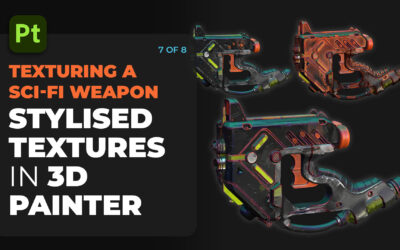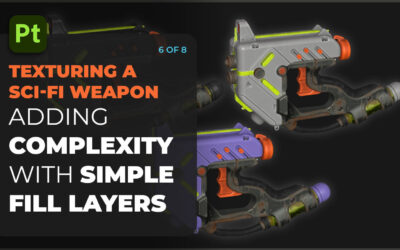Did you know that every purchase of a Wacom Intuos pen tablet or Wacom One pen display includes a free three-month trial of Skillshare? Whether you’re just getting started and want to learn how to create digital art, or you’re interested in trying out different software than what you’re used to, Skillshare is a great way to level up your skills!
Here are ten of the best Skillshare classes for digital art from across the site to get you started, featuring a variety of art styles, software, Wacom products, lengths, and complexity. Enjoy!
The basics

The basics of using a Wacom tablet to create digital artwork by Emily Cromwell
Let’s start the list off with a course for the absolute beginner. For those who need an introduction to digital art that will quickly walk you through the fundamentals of Adobe Photoshop, look no further.
Designer Emily Cromwell’s tutorial will teach you about how to create digital art using a Wacom tablet, starting from the very basics – which program to use for your needs, for example – through programming your Wacom tablet’s ExpressKeys, acquiring and working with brushes, working in layers, DPI, filetypes, and more. Her teaching style is thorough, yet accessible.
Character design and illustration
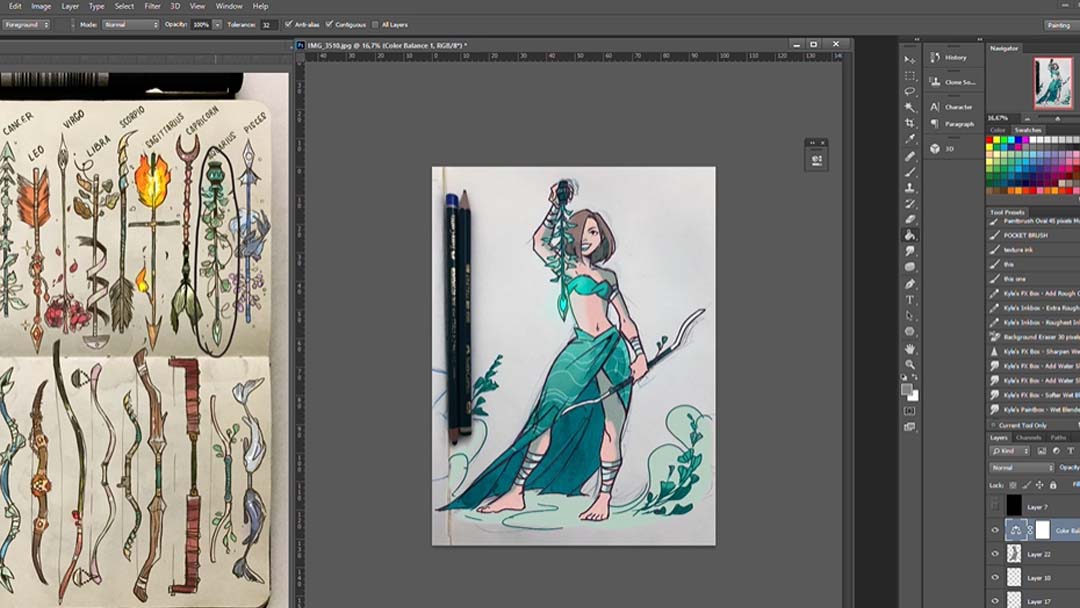
Character illustration: drawing faces, figures & clothing by Gabriel Picolo
Picolo is a Brazilian comic artist best known for his work on Teen Titans. He has 3.5 million followers on Instagram, and his Skillshare course is commensurately popular. In it, he walks us through a unique process that involves starting on paper, then pivoting to his Cintiq Companion drawing computer — an earlier version of the MobileStudio Pro — to finish the drawing.
Admittedly, the meat of the course is in the first 80%, before the digital art part – where he goes through his process, starting with gesture drawing on paper as practice, then showing us how expressions are formed by the various features of the face, as he develops a character, an archer based on the zodiac sign of Aquarius.
He goes digital for the last two segments, bouncing into Adobe Photoshop to ink, color, and texture the image: His coloring process is particularly interesting to watch, as we get to see him vacillate between color schemes before finally deciding on the one he’s going to go with at the last minute.
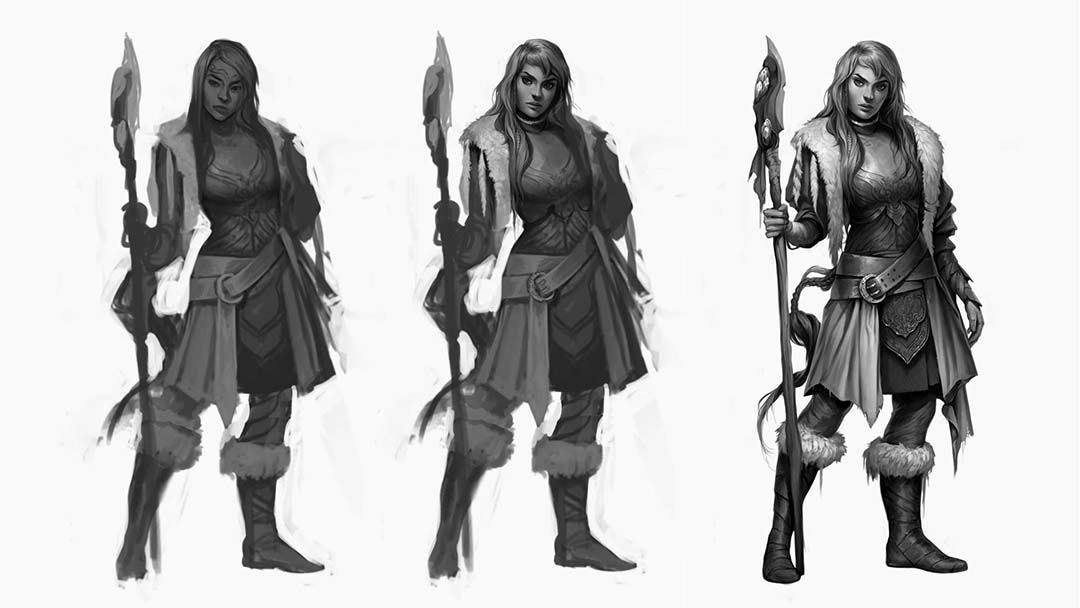
Character concept art: from initial sketch to final design by Charlie Bowater
Bowater is an astoundingly talented painter who uses limited resources: Photoshop CS5 and a Wacom Intuos 5. In this course, she starts with digital thumbnailing — rough, smudgy sketches that are just above the level of stick figures — then refines them into stunning pieces of concept art. Throughout, she constantly drops valuable tips like how to use negative space, the importance of having a character theme, how to dress your characters for their environment and function, and how to create variations on a single design to get multiple characters from one thumbnail.
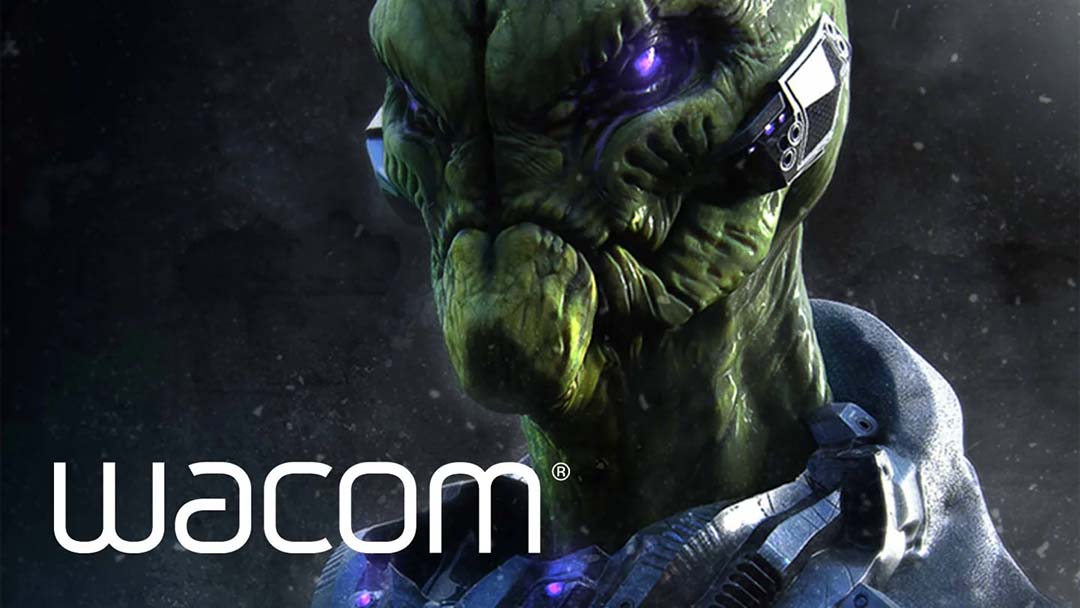
Digital concept art: designing creatures | Learn with Wacom by Justin Goby Fields
Fields is a concept artist who “makes creatures for a living,” designing for TV, films, games, and commercials. In this tutorial, he walks us through 3D sculpting program ZBrush from beginning to end, starting with the very basics and taking us all the way through to arriving at a finished creature design.
ZBrush being a program that’s impossible to use with a mouse, he does it all with his Wacom MobileStudio Pro. His course is an unparalleled introduction to a very complicated program, so if you need to learn all the basics in one fell swoop, I recommend this one.
Anime art
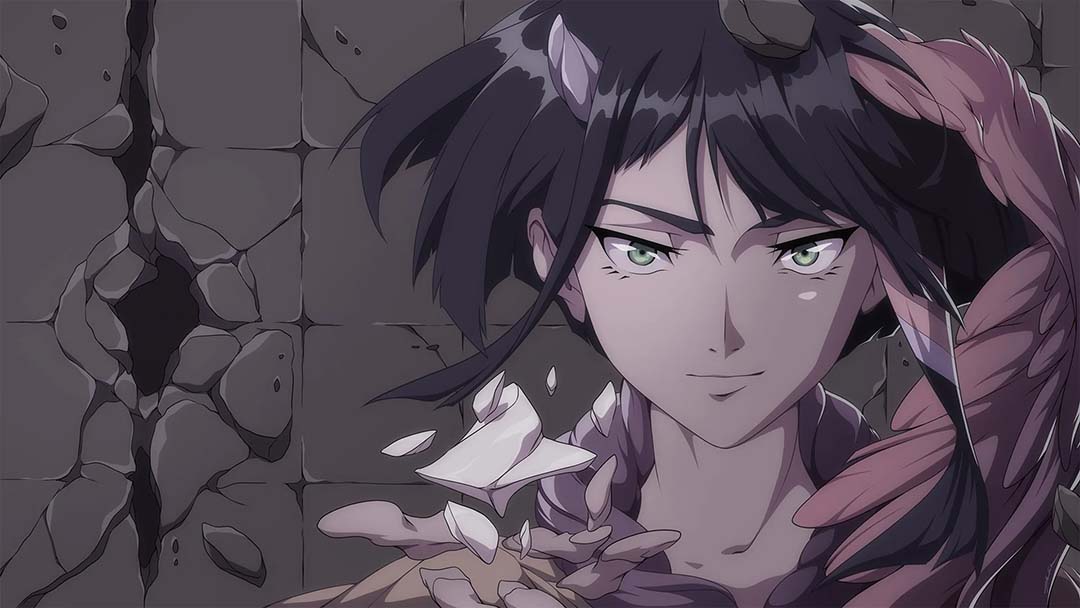
Digital anime coloring and shading masterclass by Juha Ekman
I had to toss one in for the anime and manga lovers. Plus, this is the only one that uses Clip Studio Paint, my personal favorite digital art program. Ekman is an anime-style illustrator, and in this course, he’ll teach you all the tricks of his coloring trade. Unlike most of the courses here that focus on more realistic or at least western-style art, this one is aimed at teaching you how to nail a clean “cel shading” aesthetic. As this is closest to my own style, I can highly recommend his techniques.
Concept art
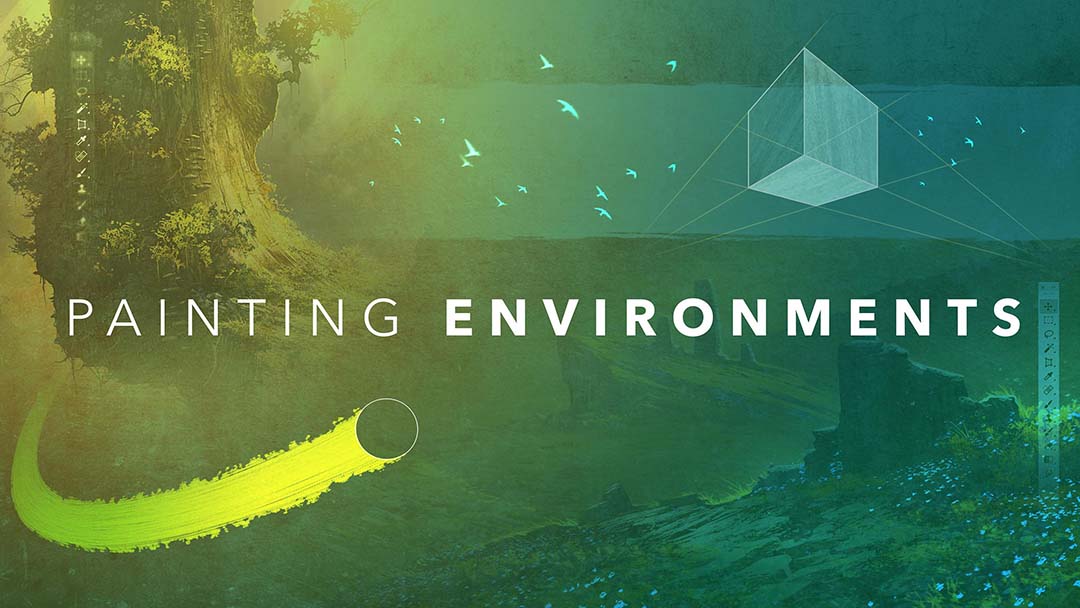
Painting environments – creating concept art worlds with Photoshop by Hardy Fowler
At over four hours, this is a long, serious course aimed at bringing the user up to a professional level in creating environment concept art. “The cool-sounding name for this,” as he puts it, “is World Creation.”
He starts with the very basics of perspective, then goes through topics like how to use depth, scale, color, and structure to create the impression of a living, breathing world, all the way through rendering. Fowler’s work is photorealistic, and he goes into depth on how he achieves those results over the course of the videos, showing us multiple projects to demonstrate the principles. He’s an engaging teacher who’ll make the time fly by, though. This is an intermediate course that requires a basic knowledge of art and Photoshop fundamentals.
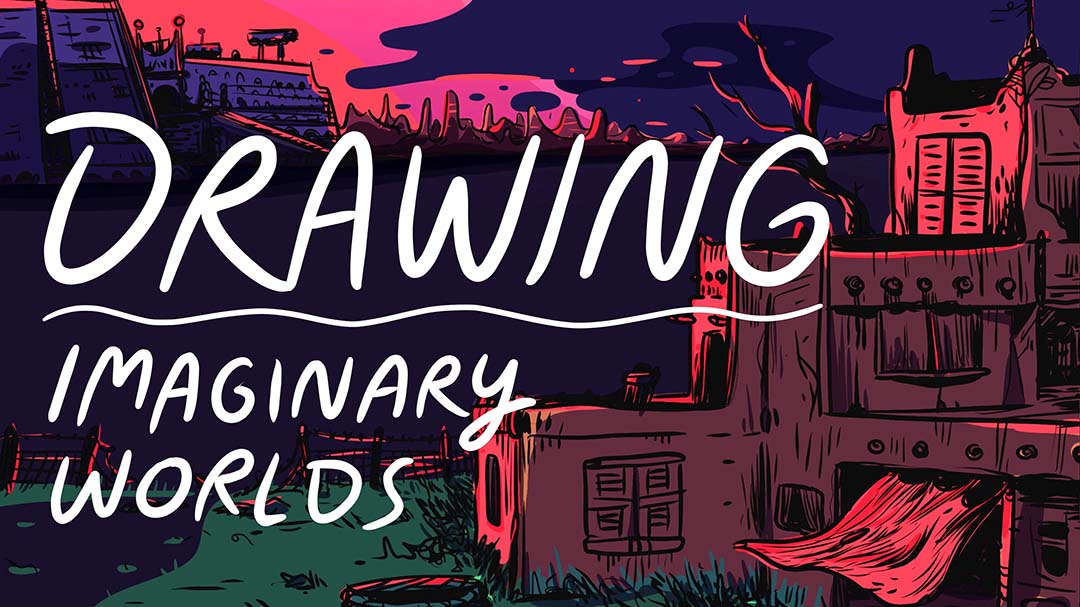
Concept art: drawing imaginary worlds [Staff Pick] by Ira Marcks
Marcks’ style and definition of concept art is different from what most of us will picture. He’s a graphic novelist, not a concept artist for movies or games of the sort we’re used to seeing, and his course communicates the ideas behind the practice, not how to draw realistic concept art.
The course’s art is straight-up digital whiteboarding, drawing cartoons to illustrate the topics he discusses. His delivery is highly entertaining, though, making this a well-deserved staff pick. Think of it as more of a course on visual storytelling: Instead of the technical aspects of concept art — which Adobe Photoshop function to use where, for example — he focuses on how to generate ideas and the thought processes that underpin the decisions concept artists make. And it’s definitely the only course here to feature a clip from Blade Runner! He finally draws a scene towards the end, but even then, it’s more of a comic style than you typically see in concept art.
Pattern design
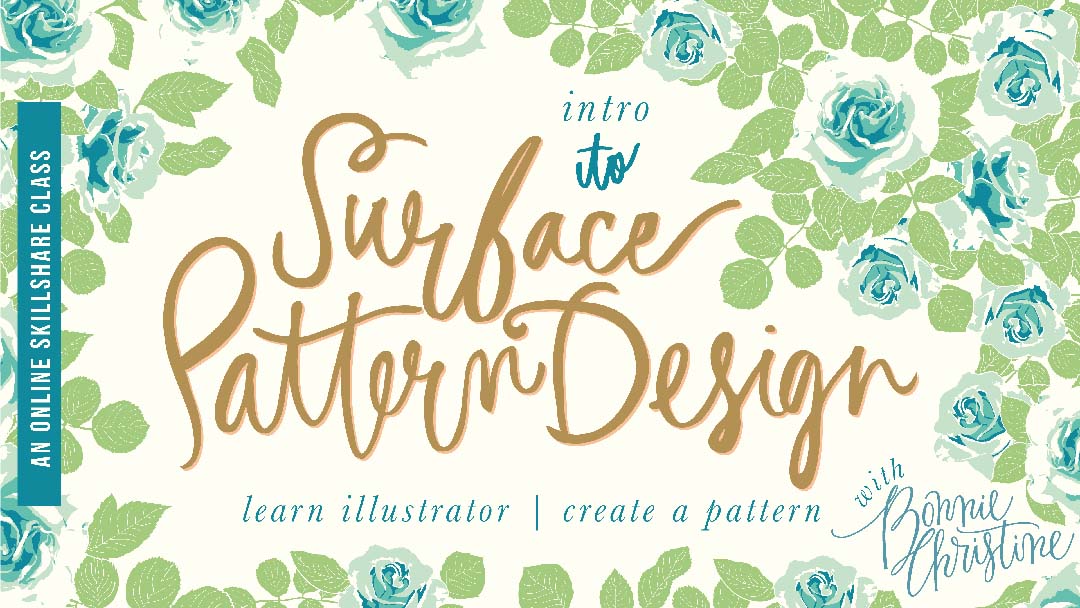
Intro to surface pattern design: learn Adobe Illustrator by Bonnie Christine
Surface pattern designers “make repeating patterns, and then apply them to products.” Their work is ubiquitous on textiles, notebooks, wallpapers, any piece of merchandise decked out with a repeating element. And in this tutorial, Bonnie Christine will teach you the art and process of it using Adobe Illustrator and an Intuos Pro.
Clocking in at over 3.5 hours, this is another long course, but it uses all that time to the fullest. Christine is painstakingly thorough, walking us first through her surface pattern design journey, then the very basics of how to use Illustrator up to the advanced levels. She goes into every tool she uses in the program, so for those who want a comprehensive walkthrough of how to use the program to go with your tutorial on pattern making, this is your course.
Photo editing

Photoshop compositing made simple: The L.E.N.S. System | Learn with Wacom by Pete Collins
Are you interested in learning photomanipulation? In this tutorial, photographer and illustrator Pete Collins will teach you how to composite an image and match the lighting so seamlessly that you’d never be able to tell the originals apart from each other. His titular system stands for “Lighting, Elevation, Noise, Sharpness,” and refers to the four fundamental properties of matching an image into a new one.
The first several modules cover the basics, then he goes into a real photomanipulation process, taking a picture of his son and shopping him into a picture of a city as a giant superhero. His explanations are clear, concise, and in-depth. So for a great introduction to all the tools of the trade of photobashing, especially the transform elements, this is a good choice.
Animation
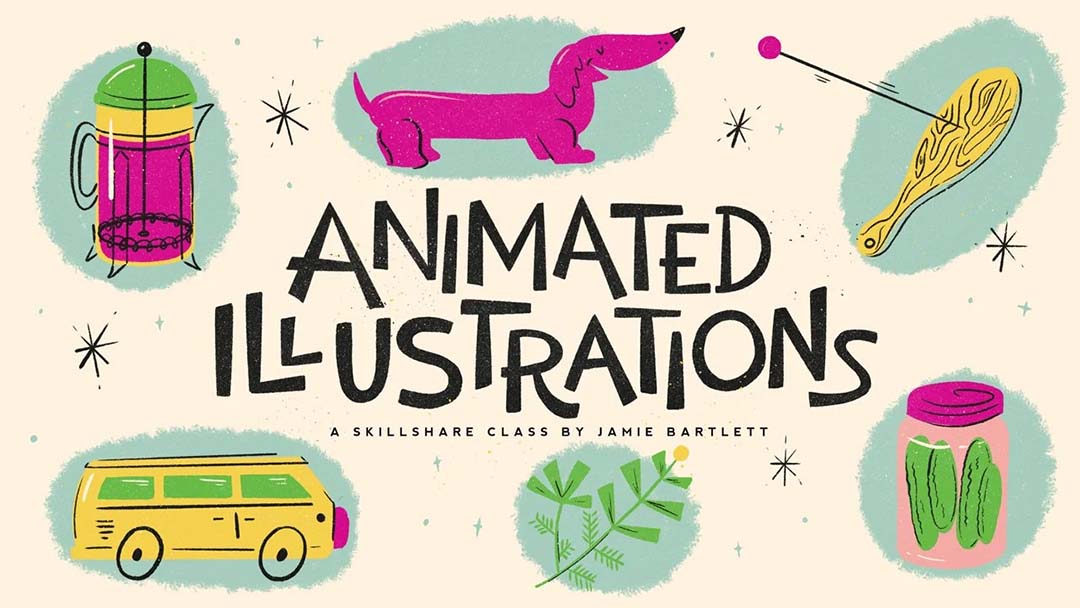
Animated illustrations by Jamie Bartlett
Jamie Bartlett is a graphic designer who also animates in Photoshop, and in this tutorial, she’ll teach you how to do the latter, showing you three different methods of animation. This course is a fun introduction to simple animation principles that you can use to add some interesting motion to your drawings.
It’s a short course at 45 minutes, as she jumps straight into the animation process with little fanfare, then efficiently takes us through how to do it, starting with a straightforward, linear animation, then proceeding to one involving the puppet warp tool, then moving on to frame-by-frame, exporting, and compositing. But it’s a unique tutorial on a lesser-used Photoshop function with some information you’ll rarely find anywhere else.
About the Author
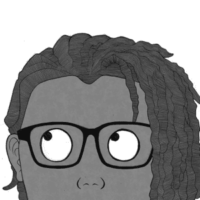
Cameron “C.S.” Jones is a West-Philly-based writer and illustrator who’s been contributing to Wacom for three years now. You can see more of his work, including most of his contributions to this blog, at thecsjones.com, or follow him on Instagram or Twitter.


